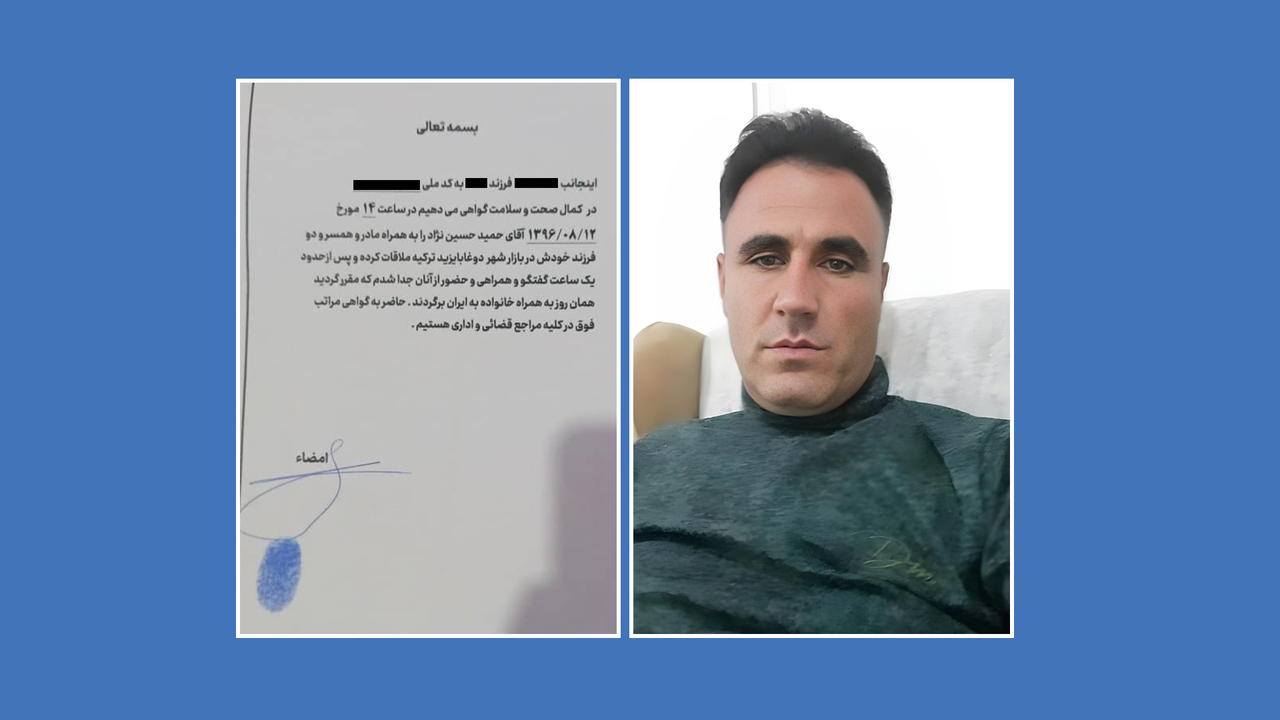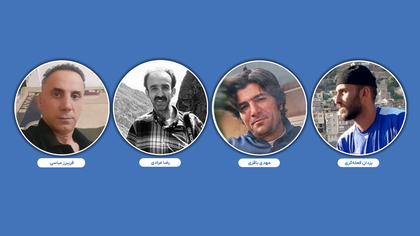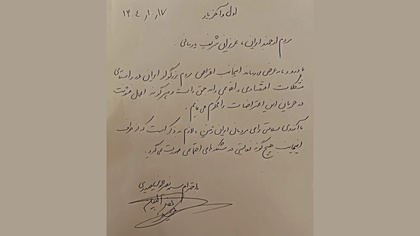"Testimonial Document" Confirms Hamid Hosseinnezhad Was in Turkey – Did the Judiciary Ignore This Evidence?

In the case of Hamid Hosseinnezhad Heydaranlou, a Kurdish political prisoner sentenced to death, a formal statement by an eyewitness—identified as Q.S.—confirms that Hamid was in Turkey on November 3, 2017 (12 Aban 1396), precisely when Iranian authorities claim a border clash occurred.
The written statement, signed and fingerprinted by the witness, reads:
“I, Q.S., son of […], hereby testify that at 2:00 PM on November 3, 2017, I saw Mr. Hamid Hosseinnezhad along with his mother, wife, and two children in the marketplace of the city of Doğubayazıt, Turkey. After spending about an hour together, we parted ways, and they told me they planned to return to Iran later that day. I am willing to testify to this before any legal or administrative body.”
This document had been officially submitted to Hamid’s defense team and recorded in the case file. According to a source who spoke to Kurdpa, the passport stamps and identification documents of the witness were also submitted, showing that the witness himself was legally present in Turkey at the time.
Despite the credible and detailed nature of this evidence, neither the judiciary nor security agencies have formally acknowledged the testimonial. The court nevertheless confirmed the death sentence, ignoring the document’s implications.
Contradiction Between the Testimony and Coerced Confession Video:
At 1:00 AM on Thursday, April 18, 2025, Iran’s state-affiliated Fars News Agency, linked to the Islamic Revolutionary Guard Corps (IRGC), released a video of Hamid Hosseinnezhad’s forced confession. The clip was seemingly intended to reinforce the charge of “rebellion” (baghi).
In the staged video, Hamid is accused of having:
“illegally smuggled an armed team from Turkey into Iran on November 3, 2017, and participated in an attack on Iranian border guards.”
However, this narrative directly contradicts the written eyewitness testimony by Q.S., which states that Hamid was seen at 2:00 PM that day in Doğubayazıt, Turkey, in the company of his family, and remained there for at least an hour.
Legal and Human Rights Implications of the Contradiction:
This conflict raises several critical legal issues:
Forced confessions have no legal value under both international human rights law and Iran’s own Criminal Procedure Code. Any statement extracted under torture, duress, or without access to counsel is inadmissible.
A written, signed, and fingerprinted testimony that provides specific, verifiable details must be given due consideration during judicial proceedings—especially when it directly challenges the prosecution’s primary evidence, which is the confession.
Courts are obligated to uphold the presumption of innocence and interpret any doubt in favor of the defendant. In Hamid’s case, exculpatory documents were disregarded, while suspicious, uncorroborated confessions became the basis for a death sentence.
Conclusion: Violation of Fair Trial Standards:
The release of the coerced confession video not only violates the principles of a fair trial, but also further undermines the legal credibility of the charges, particularly given:
The documented border exit and entry stamps from Hamid’s passport
The independent eyewitness testimony
The absence of concrete or verifiable national security evidence
In light of these materials, the foundation of the rebellion charge and death sentence against Hamid Hosseinnezhad is legally indefensible and appears to have been constructed for politically motivated purposes.



